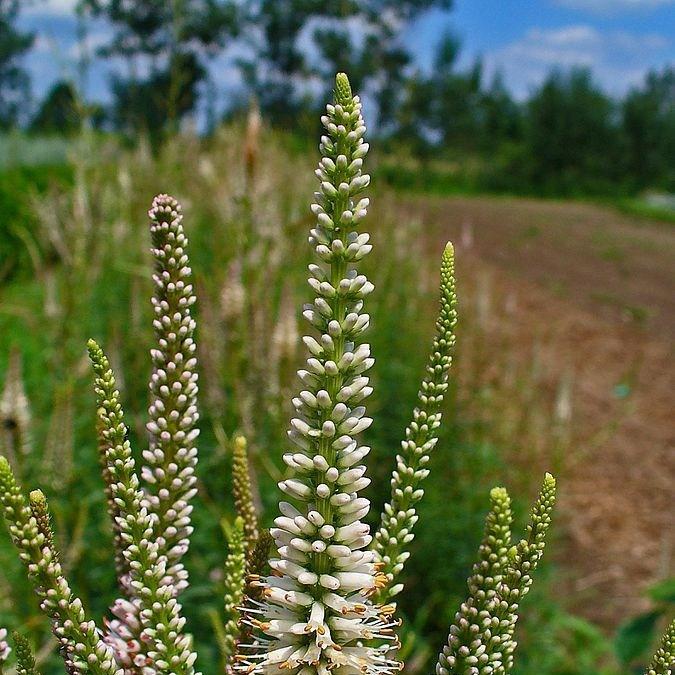
Veronicastrum virginicum syn. Veronica virginica
Culver's root
Veronica plants can be annuals or perennials. (Shrub species are now classified as Hebes) They have pairs of leaves, and small flowers, usually in spikes. Culver's root has tall flowers spikes, which can be white, blue, or pink, from mid Summer
-
Full sun to deep shade
-
Very little water
-
Full Frost Hardy: 5F (-15°C)
-
Moist and free draining
Common name
Culver's root
Latin name
Veronicastrum virginicum syn. Veronica virginica
type
Flowering plant
family
Plantaginaceae
ph
5.0 - 8.0 Acid - Neutral
Plant & bloom calendar
-
Best time to plant
full grown dimensions
 1.00 M
1.50 M
1.00 M
1.50 M
Veronicastrum virginicum syn. Veronica virginica
Veronica plants can be annuals or perennials. (Shrub species are now classified as Hebes) They have pairs of leaves, and small flowers, usually in spikes. Culver's root has tall flowers spikes, which can be white, blue, or pink, from mid Summer
Planting
From Early Autumn TO Late Spring
Plant alpine species (low growing) in any ordinary, well-drained soil in a sunny position from early Autumn to mid Spring,. The herbaceous perennial varieties should be planted between mid Autumn and late Spring in ordinary soil enriched with well rotted manure. The soil should be well drained but moisture retentive. Choose a site in full sun or partial shade. On exposed sites, stake the plants with twiggy supports.
Propagation by Division
From Late Winter TO Late Winter
All species except the invasive V. cinerea and C. pectinata can be propagated by division which should occur every third year.
Propogation by Cuttings
From Mid Summer TO Late Summer
All species can be increased from 2 inch cuttings of lateral shoots, taken in mid to late Summer

















